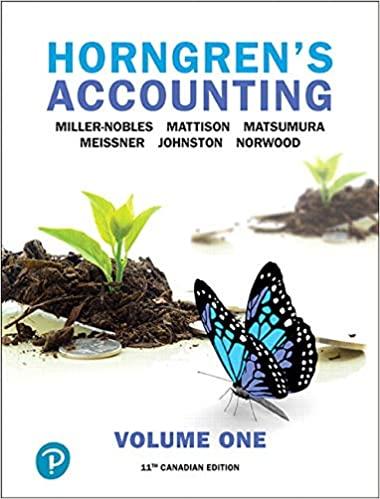Question
A company is considering a new project. The CFO plans to calculate the projects NPV by estimating the relevant cash flows for each year of
A company is considering a new project. The CFO plans to calculate the projects NPV by estimating the relevant cash flows for each year of the projects life (the initial investment cost, the annual operating cash flows, and the terminal cash flow), then discounting those cash flows at the companys WACC. Which one of the following factors should the CFO include in the cash flows when estimating the relevant cash flows?
| a. | all interest expenses on debt used to help finance the project |
| b. | the investment in working capital required to operate the project, even if that investment will be recovered at the end of the projects life |
| c. | sunk costs that have been incurred relating to the project, but only if those costs were incurred prior to the current year |
| d. | effects of the project on other divisions of the firm, but only if those effects lower the direct cash flows of the project |
2. A perpetual stock, par value $100, pays an annual dividend of $15 and is callable at $112. If investors desire a return of 20%, the current market price is:
i) $ 15.00.
ii) $ 75.00.
iii) $100.00.
iv) $112.00.
v) $115.00.
3. Aubey Aircraft recently announced that its net income increased sharply from the previous year, yet its net cash flow from operations declined. Which of the following could explain this performance?
| a. | The companys operating income declined. |
| b. | The companys expenditures on fixed assets declined. |
| c. | The companys cost of goods sold increased. |
| d. | The companys depreciation and amortization expenses declined. |
4. If the inflation rate in Canada is greater than the inflation rate in Britain, other things held constant, what will happen to the British pound?
| a. | It will appreciate against the Canadian dollar. |
| b. | It will depreciate against the Canadian dollar. |
| c. | It will remain unchanged against the Canadian dollar. |
| d. | It will appreciate against other major currencies. |
5. A new machine costing $50,000 qualifies for an investment tax credit of 20%. It replaces an existing machine with a market value of $5,000. If the existing machine has a book value of $8,000 and both machines belong to the same asset class, the incremental base for the calculation of capital cost allowance for the new machine is:
i) $32,000
ii) $35,000
iii) $42,000
iv) $45,000
v) $50,000
6. The expected market rate of return is 17% and the risk-free rate is 9%. If the beta for a firm's stock is 0.85, then the cost of equity capital for the firm is:
i) 25.00%
ii) 23.45%
iii) 17.00%
iv) 15.80%
v) 9.00%
7. A firm paid a dividend of $2 per share yesterday and expects the growth rate of dividends to be 5% in the future. If the stock beta is 1.25, the risk-free rate 4% and the return on the market portfolio 15%, the current price of the common share is:
i) $16.47
ii) $15.68
iii) $11.83
iv) $11.27
v) $10.67
8. Which of the following statements best describes the IRR method?
| a. | One defect of the IRR method is that it does not take account of cash flows over a projects full life. |
| b. | One defect of the IRR method is that it does not take account of the time value of money. |
| c. | One defect of the IRR method is that it does not take account of the cost of capital. |
| d. | One defect of the IRR method is that it assumes that the cash flows to be received from a project can be reinvested at the IRR itself, and that assumption is often not valid. |
9. Which of the following statements best describes sunk costs?
| a. | A sunk cost is any cost that must be expended in order to complete a project and bring it into operation. |
| b. | A sunk cost is any cost that was expended in the past but can be recovered if the firm decides not to go forward with the project. |
| c. | A sunk cost is a cost that was incurred and expensed in the past and cannot be recovered if the firm decides not to go forward with the project. |
| d. | Sunk costs were formerly hard to deal with, but once the NPV method came into wide use, it became possible to simply include sunk costs in the cash flows and then calculate the PV. |
10. Given a desired return of 12%, the current price of a 10% perpetual bond, $1,000.00 par value, is:
i) $1,200.00.
ii) $1,100.00.
iii) $1,000.00.
iv) $ 833.33.
v) $ 120.00.
Step by Step Solution
There are 3 Steps involved in it
Step: 1

Get Instant Access to Expert-Tailored Solutions
See step-by-step solutions with expert insights and AI powered tools for academic success
Step: 2

Step: 3

Ace Your Homework with AI
Get the answers you need in no time with our AI-driven, step-by-step assistance
Get Started


